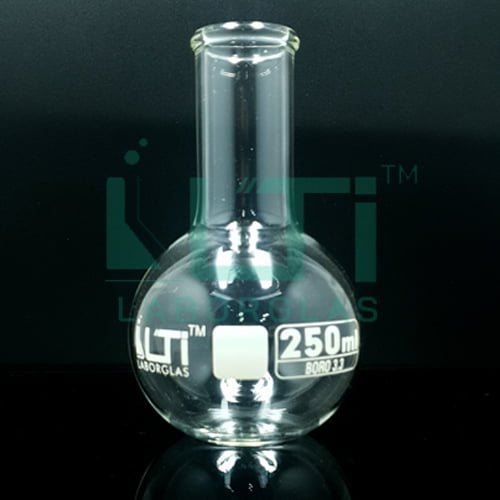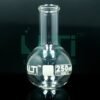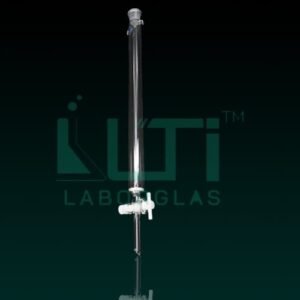- Made from ASTM E-438 Type 1, Boro 3.3 heat resistance glass
- Complies with ISO 1773
- With beaded rim
| PART No. | Capacity (ml) | D. (mm) | D1. (mm) | H. (mm) | PACK Qty. |
| 5560-50 | 50 | 51 | 26 | 90 | 10 |
| 5560-100 | 100 | 64 | 26 | 110 | 10 |
| 5560-150 | 150 | 74 | 28 | 118 | 10 |
| 5560-250 | 250 | 85 | 34 | 143 | 10 |
| 5560-500 | 500 | 105 | 34 | 168 | 10 |
| 5560-1000 | 1000 | 131 | 42 | 200 | 10 |
| 5560-2000 | 2000 | 166 | 50 | 240 | 6 |
| 5560-3000 | 3000 | 185 | 50 | 260 | 1 |
| 5560-5000 | 5000 | 223 | 50 | 305 | 1 |
| 5560-10000 | 10000 | 279 | 65 | 380 | 1 |
| 5560-20000 | 20000 | 350 | 75 | 510 | 1 |
Here are some of their typical uses:
- Chemical Reactions: The round bottom and narrow neck design facilitate efficient mixing and swirling of liquids during chemical reactions. This is particularly useful for reactions where thorough mixing is crucial for the success of the experiment.
- Distillation: The round bottom flask is often used as the boiling flask in distillation setups. Its shape allows for the even heating of liquids, and the narrow neck helps in the collection of vapors during the distillation process.
- Heating and Reflux: The round bottom flask is suitable for heating substances and can be used in reflux setups. Refluxing involves continuously boiling a reaction mixture and condensing the vapors back into the flask, which helps in carrying out reactions at elevated temperatures for extended periods.
- Solvent Evaporation: In applications like rotary evaporation, round bottom flasks are commonly used for evaporating solvents from a solution. The design allows for efficient heat transfer and vapor condensation.
- Chemical Synthesis: These flasks are widely employed in the synthesis of various chemicals and compounds, especially in organic chemistry. The shape and design of the flask help optimize the conditions for specific reactions.
- Sample Storage: In some cases, round bottom flasks may be used for storing samples, particularly when the substance is sensitive to air or moisture. The narrow neck can be fitted with a stopper to seal the flask.
- Drying Agents and Desiccation: Round bottom flasks are often used in combination with drying agents for the removal of moisture from substances. The narrow neck minimizes the exposure of the contents to the external environment.







